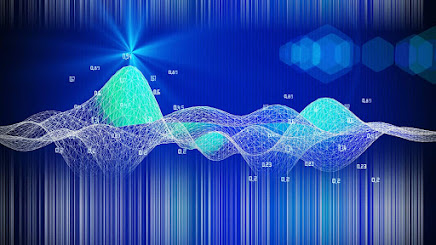Neural networks can estimate the degree of entanglement in quantum systems far more efficiently than traditional techniques, a new study shows. By side-stepping the need to fully characterize quantum states, the new deep learning method could prove especially useful for large-scale quantum technologies, where quantifying entanglement will be crucial but resource limitations make full state characterization unrealistic.
Entanglement – a situation in which multiple particles share a common wavefunction, so that disturbing one particle affects all others – is at the heart of quantum mechanics. Measuring the degree of entanglement in a system is thus part of understanding how “quantum” it is, says study co-author Miroslav Ježek, a physicist at Palacký University in Czechia. “You can observe this behaviour starting from simple two-particle systems where the fundamentals of quantum physics are discussed,” he explains. “On the other hand, there is a direct link between, for example, changes of entanglement and phase transitions in macroscopic matter.”
The problem is that the inherent uncertainty of a quantum measurement makes it extremely difficult to measure the entanglement between (for example) qubits in a quantum processor, since one must perform full multi-qubit wavefunction tomography on each qubit. Even for a small processor, this would take days: “You can’t do just one measurement and say whether you have entanglement or not,” says Predojević. “It’s like when people do a CAT [computed axial tomography] scan of your spine – you need to be in the tube 45 minutes so they can take the full image: you can’t ask whether there’s something wrong with this or that vertebra from a five minute scan.”
Finding good enough answers
Although calculating entanglement with 100% accuracy requires full quantum state tomography, several algorithms exist that can guess the quantum state from partial information. The problem with this approach, Ježek says, is “there is no mathematical proof that with some limited number of measurements you say something about entanglement at some precision level”.
In the new work, Ježek, Predojević and colleagues took a different tack, jettisoning the notion of quantum state reconstruction altogether in favour of targeting the degree of entanglement alone. To do this, they designed deep neural networks to study entangled quantum states and trained them on numerically generated data. “We randomly select quantum states and, having generated the state, we know the output of the network because we know the amount of entanglement in the system,” explains Ježek; “but we can also simulate the data that we would get during measurement of different numbers of copies from different directions…These simulated data are the input of the network.”
Finally, the researchers experimentally measured two real entangled systems: a resonantly pumped semiconductor quantum dot and a spontaneous parametric down-conversion two-photon source. “We measured full quantum state tomography…and from this we knew everything about the quantum state,” says Ježek, “Then we omitted some of these measurements.” As they removed more and more measurements, they compared the error in the predictions of their deep neural networks with the errors from the same traditional algorithm. The error of the neural networks was significantly lower.
Ryan Glasser, a quantum optics expert at Tulane University in Louisiana, US, who has previously used machine learning to estimate quantum states, calls the new work “significant”. “One of the problems quantum technologies are running into right now is that we’re getting to the point where we can scale things to larger systems, and…you want to be able to fully understand your system,” Glasser says. “Quantum systems are notoriously delicate and difficult to measure and fully characterize…[The researchers] show that they can very accurately quantify the amount of entanglement in their system, which is very useful as we go to larger and larger quantum systems because nobody wants a two-qubit quantum computer.”
Registration : https://x-i.me/prireg2
Contact us : network@sciencefather.com
Pinterest : https://x-i.me/net23p
Facebook : https://x-i.me/net23f
Linked in : https://x-i.me/net23l
#network #protocols #networkanalysis #networkmarketing
#networkswitch #networkdiagram #gigabit #bandwidth
#firewall #fiberoptics #topology #ethernet #networkspeed
#routing #scheduling #servers #bluetooth #networkawards

.png)


No comments:
Post a Comment